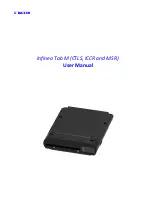
www.naxa.com
Page 23
A note about memory usage
You typically don’t need to worry about managing
apps beyond installing, opening, and using them.
But there may be times when you want to know
more about what’s happening behind the scenes.
Apps use two kinds of memory: internal storage
and RAM. They use internal storage for themselves
and any files, settings, and other data they use.
They also use RAM (memory designed for tempo-
rary storage and fast access) when they’re running.
Your tablet manages and carefully guards the por-
tion of internal storage where the system, apps,
and most data for those apps are stored, because
this area may contain your private information. It’s
not possible to view this portion of internal stor-
age when you connect your device to a computer
with a USB cable. The other portion of internal
storage, where music, downloaded files, and so on
are stored, remains visible for your convenience.
Your tablet also manages how apps use RAM. It
may cache some things you’ve been using recent-
ly, for quicker access if you need them again, but
it will erase the cache if it needs the RAM for new
activities. You affect the way apps use internal
storage directly and indirectly in many ways; for
example, by:
• Installing or uninstalling apps.
• Downloading files in Browser, mail, and
other apps.
• Creating files (for example, by taking pic-
tures).
• Deleting downloaded files or files you
created.
• Copying files between your device and a
computer via USB.
You rarely need to manage the way apps use RAM.
But you can monitor RAM usage and stop them if
they misbehave.
Personal
Location access
Adjust the location services options of your tablet.
Security
Set screen lock: Depending how you use your tablet, you may
want to set some form of automatic screen lock to prevent
unauthorized access. If a screen lock has been set, the screen
locks when your tablet’s display goes to sleep. Select one of
the screen lock types from the list and then follow the on-








































